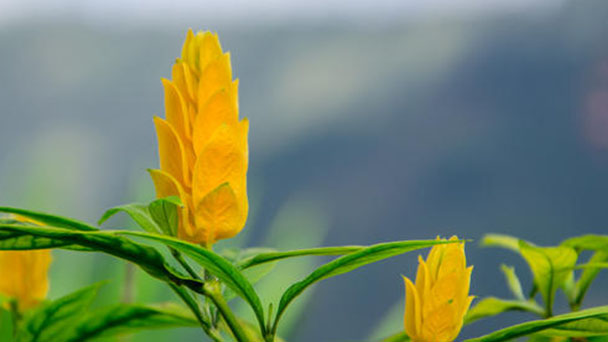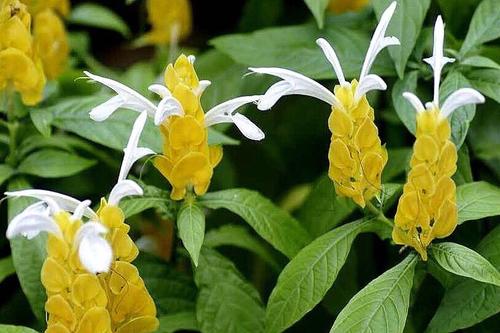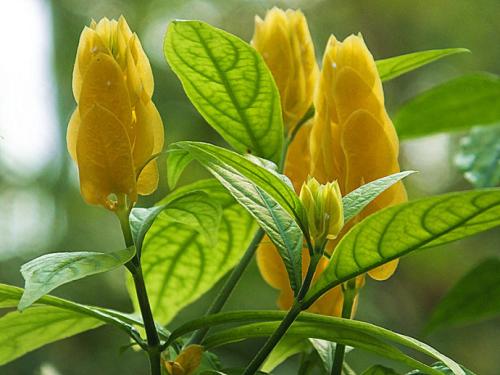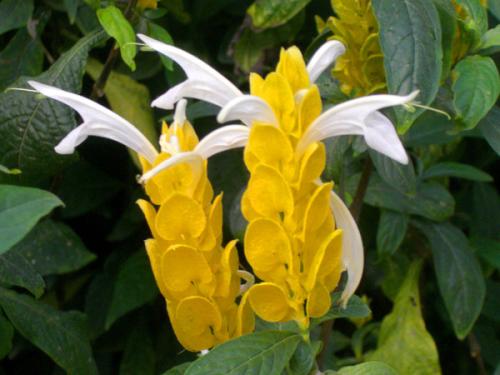Propagation methods of Pachystachys Lutea
Written by Maggie
Jan 06 2021

Pachystachys Lutea, also known as lollipop plant and golden shrimp plant, belongs to the phyllostachya perennial evergreen herbs, mainly by cutting method for propagation, then, here is a look at the specific propagation methods of Pachystachys Lutea.

Cutting propagation method of Pachystachys Lutea
1. Cutting time
Cutting time of pachystachys Lutea can be carried out in April and June.
2. Branch selection
You can directly select from the pachystachys lutea plant on the length of about 8-10 cm tender shoots, choose strong growth, short internode branches as cuttings, and remove the lower leaves, retain the top leaf, length of about 8-10 cm.
3. Cutting method
The selected branches can be directly inserted into sand or a stone with a depth of 1/3 to 1/2 the length of the head. The cuttings are then poured through water and kept wet with a mask plastic film. The cuttings are placed under the shade to maintain proper rooting temperature from 20℃ to 25 ℃, and can be rooted in 7 to 10 days.
4. The basin
Cut seedlings on the basin, usable pond mud 2, blue chaff ash 1, and add bean cake flour or chicken manure as basal fertilizer, seedlings after a week to gradually let it see the sun. After the survival of the seedlings, to pick, the first 1-2 sections to pick, to grow 2-3 pairs of new leaves, and leave a pair of leaves to pick, stop picking, 2-3 months can be flowering.

Other propagation methods of Pachystachys Lutea
In addition, in order to promote the rapid propagation of Pachystachys Lutea, Pachystachys Lutea stem tip, axillary bud tissue culture method for reproduction, but this method is more difficult, professional, not suitable for family operations.
Tips for propagating Pachystachys Lutea
Pachystachys Lutea often has small black mildew spots on flowers due to poor ventilation during flowering and in winter greenhouses. The mildew is actually the excrement of mealworms. Once the adults become too dense, these dense black spots occur, causing Pachystachys Lutea to rot. In addition, it also often occurs red wax fried and aphids harm, directly affect the growth and ornamental effects of Pachystachys Lutea. Once insect pests occur, 40% of the oxidized dimethoate 1500 times liquid can be used for continuous spraying
Pachystachys Lutea's wintering temperature generally cannot be less than 10℃, otherwise the leaves are prone to yellow and wither. If the temperature can be more than 15℃, it will bloom in winter. By the spring of the next year, the stems of the old plants of more than 2 years have become semi-lignified and grow weak. At this time, cuttings should be replaced.

Latest Updated
- Benefits of Bugleweed - 7 Science-backed Health Benefits
- Bugleweed Dangers & Side Effects - Is It Poisonous?
- How to Plant Evergreen Trees - What You Should Know
- When to Plant Evergreens - Grow Guide for Evergreen Trees
- 12 Wonderful Evergreen Shrubs for Your Garden
- 12 Popular Evergreen Plants with Pictures for Beginners
- When And How To Prune A Lilac Bush Like a Pro
- How to Grow & Care for Lilac Vine (Hardenbergia Violacea)
- Japanese Lilac Tree (Syringa Reticulata) Care & Propagation Guide
- Shumard Oak Pros and Cons - What to Know
Popular Articles
- Winter maintenance of Antirrhinum Majus
- How to Grow Terminalia Mantaly Tree
- How to Grow and Care for Crossostephium Chinense
- How to grow Antirrhinum Majus in spring
- Peristeria Elata (Dove Orchid) Profile: Info & Care Guide
- Underwatered Snake Plant (Sansevieria Trifasciata) - Signs And How To Fix
- How to Care for Brazilian Jasmine Plant (Mandevilla Sanderi)
- How to Grow & Care for Graptopetalum Purple Delight in Summer
- Rosa Chinensis (China Rose): Plant Growing & Care Tips
- How to Care for Baby Sun Rose (Aptenia Cordifolia)